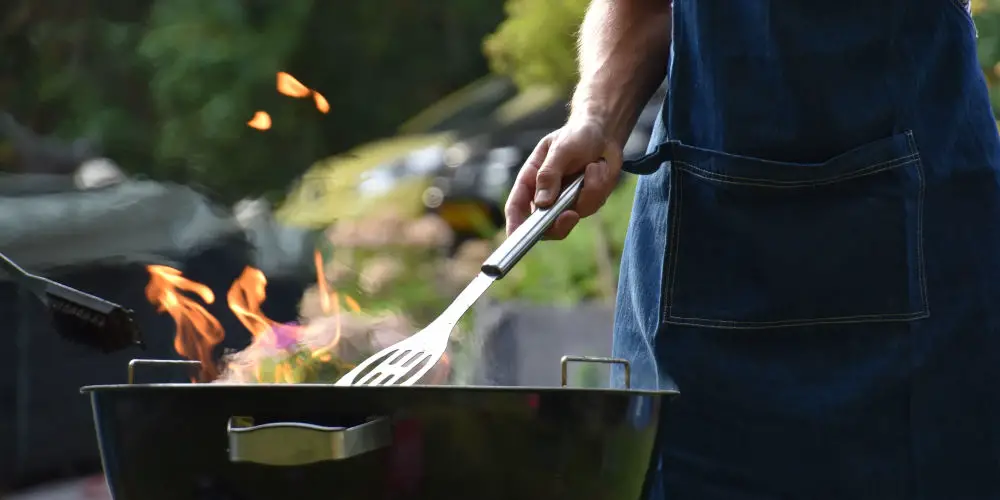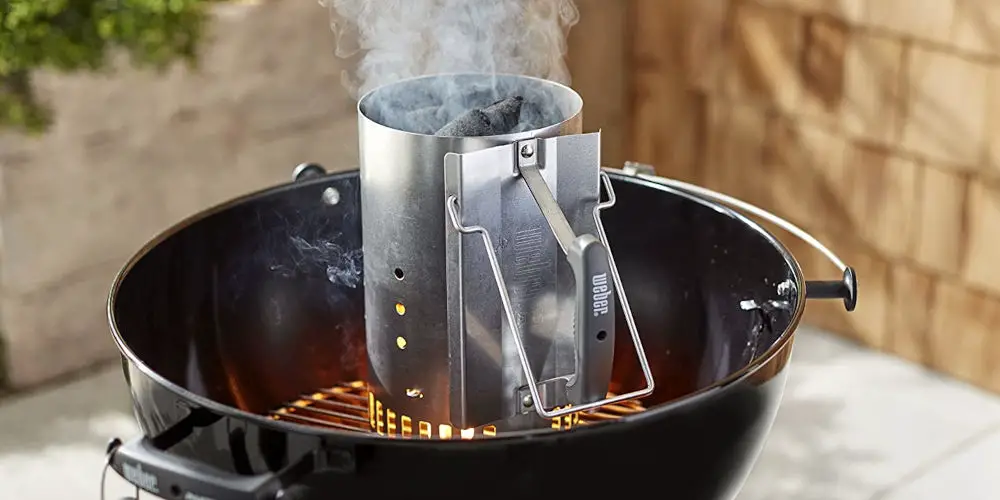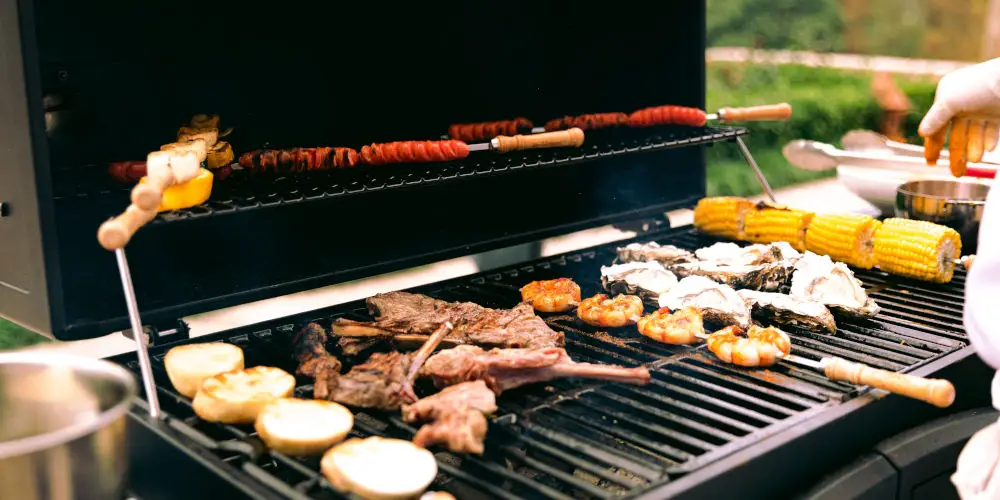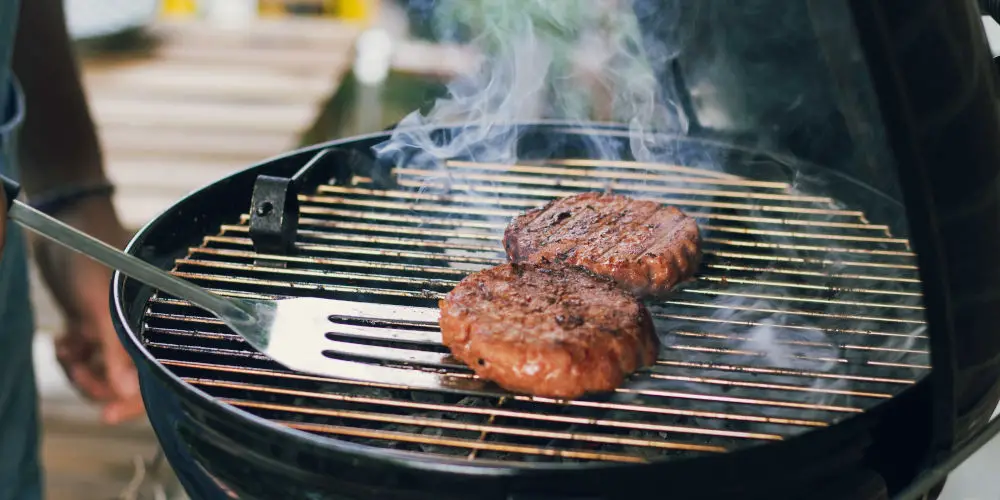How to light a BBQ regardless of the weather!

There’s a few tricks and tip you need to ensure your charcoal barbecue is easy to get started. Learn how to light a BBQ safely and for the best results. We’ll cover how best to arrange the coals and when to know the right time to start cooking.
Summer wouldn’t be the same without a BBQ, no matter how terrible the weather is! Even with all of the will in the world and planning, can’t change the slight drizzle to sunny weather! One thing you do have control over, well some, is how you light your BBQ!
In this guide on how to light a BBQ, you’ll learn all of the basics including where to place the coals, tips to ensure they stay lit and how to tell when your coals are ready for cooking. You shouldn’t need to worry about nuking your sausages or reducing your kebabs to a crisp!
Along the way, we’ll pepper in (pun, intended) some of our top tips and tricks to ensure you get your barbecue sizzling!
Position your BBQ in an open space
As you’re starting a contained fire, one of the most important factors to consider is where you’ll position your BBQ. Ideally, you’ll set up your barbecue in an open space away from your home, fences or trees.
Your moto should be Safety First. Before you think about lighting your BBQ, ensure it’s sturdily on a flat surface and has no wobbly legs.
Practically, you’ll want to have either a fire extinguisher or a bucket of water nearby. It’s also a good idea to keep kids and pets well away. Once lit, you shouldn’t leave your BBQ alone, even if you do need the loo!
Regardless of whether you’re using a portable or single-use BBQ or have invested a small fortune building an outdoor kitchen, you shouldn’t scrimp on buying essential BBQ tools.
So, spend the extra and buy a good set of long-handled tongs and proper barbecue equipment with insulated handles.
Can’t decide between Gas and Coal? Start with our guide: Gas vs charcoal BBQ: Which is best for your garden?
Buy good-quality charcoal
Don’t buy the cheapest charcoal that is available at your local gardening centre or supermarket as you’ll end up having poor results. Instead, buy good-quality sustainably produced charcoal.
Ideally, buy charcoal that’s made from coppiced wood or Forestry Commission-approved wood. Granted, these aren’t cheap but light easily, burns better and won’t taint the flavour of the food, unlike charcoals containing accelerants.

photo by Weber
Secret weapon! Use a chimney starter
Piling your charcoal in your BBQ with a few scrumped pieces of paper is a very old school method of lighting a barbecue! The easiest way to light a BBQ is to use a chimney starter. Our favourite is the Weber Chimney Starter.
These tubular starters allow you to easily light charcoal with a few sheets of newspaper. Your coals will quickly catch fire and start glowing without needing much poking or relighting.
Another benefit of using a chimney starter is that they protect the coals (and you) on a windy day. Once the coals are lit, simply, tip them into the barbecue.
Don’t have a chimney? Try arranging your charcoal in a stack
If it’s too late to buy a charcoal chimney before your BBQ or if you’re not convinced that you need one, then try arranging your coals in a stack.
Next, push balls of newspaper or natural firelighters (such as wood shavings or wool) between the charcoals. Avoid using a liquid lighter or environmentally unfriendly firelighters. It’s best to keep the chemicals to a minimum, even if they won’t taint your food with a slightly weird smell.
With a match, set light to the paper and firelighters. Allow the flames to catch and spread. After a while, they should die down again, revealing ashen coals which are ideal to cook on. Don’t be tempted to fill your grill with meat when the flames are big as all you’ll achieve is burnt food!
Thankfully, after you’ve got a few coals lit, the rest will catch on their own. So, trust the process and resist the urge to add more firelighters or use chemicals.
As you barbecue food, if the heat starts to die down, then add coals to the outside of the barbecue. Leave them to flame up and die down before cooking over them.

Do you need direct or indirect heat?
Depending on how you arrange your coals, you can have multiple heat zones. You can then use each area slightly different as you have more control over your barbecue. So, it’s worth understanding the difference between direct and indirect heat.
Direct heat
Imagine putting a burger in a pan on your stove and turn it up to maximum. Your burger will be cooked quickly but this method will cremate chicken, kebabs and anything that needs a little more time to cook.
This is direct heat and the BBQ equivalent is placing your meat on flaming coals. again, fine for thin cuts of meats that cook fast but not ideal for food that needs a more gentle flame over a longer time.
Indirect heat
By pushing the coals to one side of the BBQ, you create a cooler half, which is ideal for cooking items slower. This coal-free side is powered by indirect heat. Another benefit of splitting your BBQ in two is half can be used for cooking and the other half can keep food warm.
Another way to create indirect heat is to place a roasting tray in the middle of the barbecue. Next, stack coals around and light them. Place food on the grill, so that it sits over the tray and not the coals.
Finally cover with the lid. As the heat circulates, the barbecue cooks your food with a hot smoker/spit-roast effect. Cooking indirectly means food won’t burn or scorch.
If you have larger joints of meats, such as chickens and lamb, then indirect cooking is ideal. Also, it’s perfect for fish and vegetables. As you have some direct heat, if you want to brown some food quickly, you can.
Can we have a little of each?
It’s possible to have both direct and indirect heat available when using your BBQ. Simply, slope your coals, so that you can get a gradient of heat across the grill. At one end, it’ll be searing hot and the other will be cooler, allowing you to gently sizzle food!
If you’re cooking for a group of friends, then arranging your coals this way is helpful as you can keep food warm or slowly cooking over at one end while cooking at full heat at the other.

When are your coals are ready to cook on?
You can easily ruin food if you try to cook when the coals aren’t ready. So don’t risk overcooked or burnt food!
If you have black coals or grey ones with flames, your grill isn’t ready yet. Enjoy a drink or two and come back in 10 or 20 minutes.
When your coals are glowing white hot with red centres, then you have the perfect conditions for direct heat. You can check by blowing very gently.
For indirect heat, you want to wait until the coals turn ashy white but still very hot.
Keep a thermometer handy
Before you dismiss this tip as something your mother might say, remember that testing your food’s temperature helps to prevent disaster. So, it’s a good idea to have a temperature probe such as the IREENUO Digital Food Thermometer handy.
That’s how to light a BBQ safely!
Having learnt how to light a BBQ safely is a useful skill and one that takes a bit of effort to master. Start with the best charcoal you can afford and use a chimney to speed up the lighting process. Avoid using chemicals as they will seep into your food.
Experiment cooking with direct and indirect heat, as it will help you produce better results. And oh, keep a temperature probe handy to ensure all the food you serve is safe!




